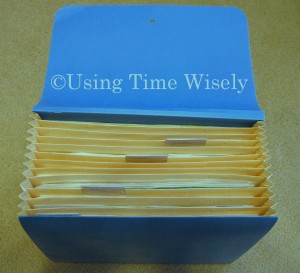With budgets getting so tight already this year, you may consider selling unused items, refinancing your home, or getting a reverse mortgage to increase your income. Before accepting a reverse mortgage offer, please consider the pros and cons. To help us understand a reverse mortgage, I present Kay Winders of badcreditloans.org, our guest post writer today. Thank you, Kay! ~ Tracy
 Many seniors find that they spend the majority of their adult, working life paying off the mortgage on their home only to struggle to maintain the taxes and upkeep on their homes once they retire and are no longer making the same income.
Many seniors find that they spend the majority of their adult, working life paying off the mortgage on their home only to struggle to maintain the taxes and upkeep on their homes once they retire and are no longer making the same income.
For many, a reverse mortgage provides the answer they need to solve their financial difficulties, either for maintaining their homes or for taking care of other obligations that become difficult on a limited income. Or, it can just provide the money needed to truly enjoy retirement.
With a reverse mortgage, the bank pays out a loan based on the amount of equity you have in your home. The money can be paid out in a lump sum, issued in monthly payments, or given as a line of credit. You retain the title to your home (and the responsibility for taxes and repairs), and the bank is paid back when you sell your home (or your heirs pay it back when you die).
Like any loan, it is important to evaluate all the pros and cons to determine if a reverse mortgage is the right choice for you. Here are a few factors that you should consider when making the decision:
Your Age
Banks consider your age when deciding whether to grant you the loan and what interest rate to charge you. The older you are, the more likely you are to be approved for a loan. That’s because you are likely to have more equity built into your home and because the bank will assume that it will be responsible for the monthly payout for a shorter amount of time.
How Much You Owe
To qualify for a reverse mortgage, you must own your home or be able to pay off the amount you owe at the time of closing on the reverse mortgage. The bank can’t pay you for a home that you don’t legally own outright. If you still have many years to go before you pay off your home, just wait until you are close enough to the finish line to pay off the rest while still profiting from the reverse mortgage.
The Value of Your Home
You will have to pay back the reverse mortgage when you sell your home — or your heirs will have to pay it off when you die. It’s important to consider trends in the real-estate market before you choose a reverse mortgage. If the market tanks in the next few years, the value of your home may plummet, and you may not be able to sell your home for what the bank paid you for it. If the value of your home drops, you may pass on big debts to your heirs.
Inheritance Plans
Many people want to leave their homes behind for their children or other family members as an inheritance. If you get a reverse mortgage on your home, you won’t own it outright anymore, and you will risk not being able to leave it to your heirs. Even if you don’t sell your home and pass it on to your heirs, they will be responsible for paying off the reverse mortgage when you pass, potentially saddling them with large debts.
A reverse mortgage is a great way to get the money you need during retirement to either provide an income stream or to fund your travels or other retirement projects. However, you should carefully consider these issues before deciding if a reverse mortgage is right for you and your family.
Question: Have you secured a reverse mortgage on your home? Tell us why it was the right decision for you in the comments!
Kay Winders is presently the resident writer for badcreditloans.org, where she researches the best way for people to pay off their debts without damaging their credit. In her spare time, she enjoys freelance writing, the beach, and gardening.
